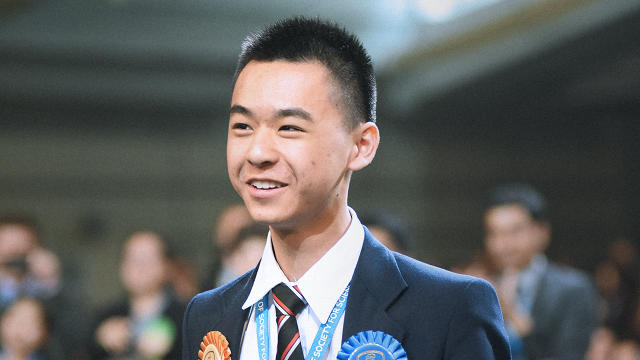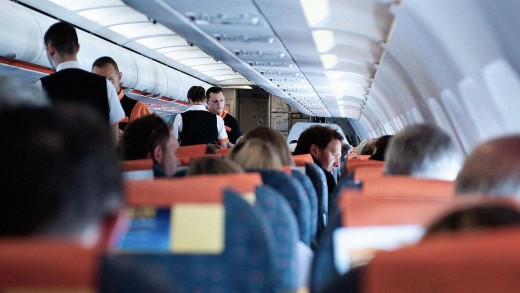This Teenager Just Designed A System That Keeps You Safe From Germs On Planes
Air cocoons insulate you from your sneezing, coughing neighbor.
Planes are fairly disgusting, germ-filled places. Who knows what the person before you did with that tray table? And who knows what kind of germs that person with a hacking cough in the seat next to you will spread?
Like most people, Raymond Wang—a 17-year-old high school student from Vancouver, British Columbia who just won $75,000 in the Intel International Science and Engineering Fair (ISEF)—was concerned about the Ebola virus when it first started making its way across West Africa. His next thought: How do diseases like this spread on airplanes? Wang soon discovered that Ebola isn’t transmissible through the air, so he began looking into airborne diseases like the flu and SARS.

Eventually, he came up with a new kind of air inlet system for planes that can reduce disease transmission by up to 55 times and improve fresh airflow by 190%. An entire plane could be outfitted overnight with the system, which is installed along the cabin sidewalls, for the price of a single passenger’s airline ticket.
“I found out that there was very limited research into how pathogens travel in aircraft. People were over-approximating the shape of the cabin, and failing to model important physics in the simulation,” says Wang. So he called up a company that makes commercial simulation software, and was given access to training videos on how to work with the product. He then came up with his own airplane airflow simulations.
This is what a passenger sneeze looks like in a traditional plane. The particles go flying all over the place.
Here’s another perspective of airflow in a normal plane. You can see that the air swirls around, covering the cabin.
This is what airflow looks like in a simulation using Wang’s air inlet system. At the 8 second mark, you’ll see how the system redirects airflow to create walls of air that isolate individual passengers, essentially providing each person with a personal breathing zone.
Wang has already applied for a patent, and he’s planning to contact aircraft manufacturers and airlines to talk about implementation. But the inventor, still a junior in high school, does expect to go to college. “After graduation, I plan on pursuing some kind of engineering and business degree—then taking innovations and implementing them into the real world,” he says.
[Top Photo: pcruciatti via Shutterstock]
Fast Company , Read Full Story
(227)














